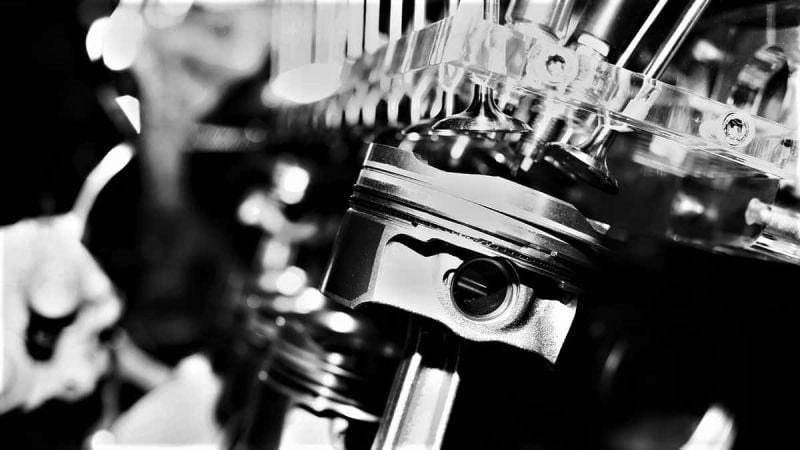Vehicle Restoration Headaches
Restoring a classic vehicle---or even one that is too new to be considered “classic” but still desirable enough to warrant a restoration---is not an undertaking for the fainthearted or someone with just enough money to pay the bills and put food on the table. A true vehicle restoration including a rebuilt engine, transmission, interior, exterior, etc. can and will cost much more than most car owners realize when beginning a project. Which is why you will find a lot of uncompleted projects for sale in ads on Hemmings and some other automotive magazines.
The other hard truth for someone undertaking a rebuild/restoration project is that it is rare to make a decent profit afterward once all of the parts, labor and time is tallied. Again, take a look at Hemmings and you will find some restored vehicles up for sale that if you saw the before and after photos, you could bet that the asking price does not follow the actual rebuild cost. However, many completed projects were more about the journey than the destination and so they can be a win-win for everyone.
But all if this is the money-side of reality. The other part that takes a toll on the owner (and some marriages) is the angst that comes with finding original parts, ordering and waiting on parts, discovering new hidden problems, finding and relying on someone to do parts of the work that you do not do…and hoping that nothing drastic goes wrong in the process.
Chief among these concerns is hiring a shop to take care of the engine rebuild of an old engine that still has some life to it, but definitely could be resurrected like new, given improved parts and careful experienced hands on a wrench.
Related article: Consumer Reports Analysts Reveal the Used Cars Most Likely to Need an Engine Rebuild and What to Buy Instead
Related article: Engine Compression Test Demonstrated After 280,000 Miles
But what if your engine rebuild goes bad? After sinking so much time and money into the project, it is not unusual for a customer to respond like one did in the video posted below that serves as a good lesson on what not to do.
Before going any further, watch the video and let’s see where the response to the rebuild could have been better for all concerned.
The '83 Wagoneer rebuild is dead! CAR WIZARD gets burned by another shop!
The Point to This Video
The point to showing this video is that there is a lesson here in the realities of restoration and rebuilds (or just in having any engine rebuilt) that was not adequately made in the video…but were made in the comments section below.
Pan down to the comments section of the video and you will find a good number of comments that make valid points that there can be much more to a blown engine than playing a point the finger blame game on the mechanic or shop that did the work.
Sometimes a rebuilt engine can or eventually will blow due to inferior parts from a manufacturer where quality control messed up…or when they came from a questionable source. Sometimes a rebuilt engine will fail because either a dyno test was not done or was not done correctly. Sometimes a rebuilt engine will fail because some undetected foreign debris remained in the block such as oil passages that then led to failure. Despite the possibilities, there should be some warranty protection from the garage doing the rebuild of the engine.
In any case, there is not enough information to support the blame on why this rebuild went south on the owner. And while it is very understandable that the owner did not want to deal with the garage that rebuilt the blown engine, the Car Wizard might have failed to advise the owner correctly…but then again, we do not know the dynamics of what was actually said.
However, in any case, the best solution would be to go back to the garage that rebuilt the engine and let them determine what happened and then receive compensation for the failed engine. It could very well be that a faulty part could have been the cause of the engine failure, of which the garage has some responsibility and can in turn seek recompense from the manufacturer. In other words, the owner should take it as part of the realities of a rebuild/restoration and make the best of a bad situation. Furthermore, it really does pay-off to be proactive when hiring someone else to do the work and ensuring that you are involved in the work done.
Enough said. Here is a useful video that discusses and demonstrates how and why a Dyno test is done on a rebuilt engine; plus, why it is a good idea for the car owner to be present during this critical phase of not only seeing that the engine has been tuned properly, but that the rebuild went well. If the engine fails during the Dyno test, there’s no better place to be than there when it happens and the mechanics who did the work are present.
Engine Building - Dyno Testing, Setup, Tuning, How to Select a Dyno Shop
And finally…
For additional related articles about engines, here are three for your consideration:
Engine Swapping Expert Reveals the Realities About Engine Replacement
One Fatal Flaw That is Destroying Vehicles with Ford Engines
Consumer Reports Mechanics Advise Avoiding These Models Known for Blowing a Gasket
COMING UP NEXT: The Biggest Mistake Good Car Owners Make Maintaining Their Car That Dealerships Use to Scam Customers
Timothy Boyer is a Torque News automotive reporter based in Cincinnati. Experienced with early car restorations, he regularly restores older vehicles with engine modifications for improved performance. Follow Tim on Twitter at @TimBoyerWrites for daily new and used vehicle news.
Image Source: Pixabay











